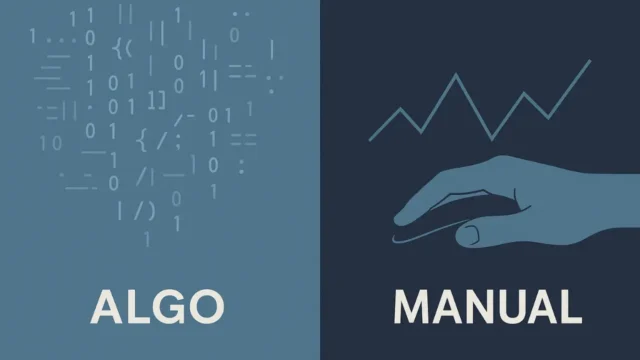Follow Us
Trading with Python: How to Automate Your Trading

Table of Contents
Retail traders love to dream about bots printing money while they sip cocktails on a beach.
Reality check: most bots fail, and they fail fast. I have seen bots that looked like geniuses on paper, then lost money faster than a drunk gambler the moment they went live.
Here’s the difference between the bots that survive and the ones that crash: the survivors are built with discipline, tested to death, and monitored like hawks.
Python gives you the tools to do that, if you know what you’re doing.
Why Most Python Trading Bots Fail (And How to Avoid It)
Here’s the ugly truth: most retail bots never make it past the first week. Not because Python is bad — it’s because traders treat coding like a game.
The usual death spiral looks like this:
- You grab a random strategy from a forum.
- It backtests perfectly (because you unknowingly curve-fitted it).
- You push it live with real money.
- It tanks when the market throws the first curveball
Want to avoid the graveyard? Do this instead:
- Build simple strategies first. Complexity hides flaws.
- Test on multiple datasets. If it only wins on one, it’s lying to you.
- Paper trade like your life depends on it before you go live.
Read related post:
Quantitative Trading Explained: Strategies, Tools & How to Start
Building a Python Trading Bot That Actually Works
You don’t need a thousand lines of code to start. What you need is structure, not spaghetti.
Think of it like building a car: chassis first, engine second, paint job last. Too many traders start with the paint.
Set the Foundation: The Right Python Environment and Tools
Pick tools you won’t fight with later.
- Install a clean Python 3 environment (use a virtual environment).
- Choose a solid IDE like VS Code so debugging doesn’t feel like a nightmare.
- Add the right libraries:
pandasandnumpyfor data,pandas-tafor indicators, Backtrader or VectorBT for testing.
Spend an hour setting this up properly, and you’ll save yourself days of debugging hell.
Feed Your Bot: Getting Reliable Market Data Sources
Your bot is only as smart as the data it eats. Use clean, reliable market feeds. For stocks, pull data from Yahoo Finance or broker APIs like Alpaca.
For crypto, Binance’s API is the standard. For Indian markets, Zerodha Kite Connect is gold.
The trap? Free data can have gaps, delays, or incorrect pricing. That’s how your bot “wins” in backtests and dies live.
Always validate the feed, log it, and back it up.
(For data API setup, hit the official docs: Alpaca, Binance, Zerodha Kite.)
Read related post:
5 Best Programming Languages for Algorithmic Trading
Teach It to Trade: Simple Strategies Before Complex Ones
Forget about “secret” strategies you find online. Build something simple you understand like a moving average crossover or RSI-based mean reversion.
Keep your first strategy so simple it’s almost boring. Complexity comes later; once you know how to keep the bot alive.
Test Your Trading Bot Until It Breaks
Here’s where most traders get lazy, and that’s why their bots blow up. A backtest isn’t a trophy, it’s a stress test.
Your job is to break your bot in testing so the market doesn’t break it live.
Start with historical data, but don’t just test on one nice trending year where everything looks profitable.
Throw it at sideways markets, high-volatility periods, and random timeframes. If it only works in a perfect scenario, it’s a ticking time bomb.
Fees and slippage? Add them into your tests. If your bot trades too often, watch how transaction costs eat its lunch.
Finally, don’t just backtest, walk-forward test. Train it on one dataset, validate on another. If it survives, it’s worth moving to the next stage: paper trading.
Going Live: How to Deploy Your Python Bot Safely
The first time you send a bot live, you’ll feel that mix of excitement and dread and you should. Paper trading is your safety net.
Most broker APIs (Alpaca, Zerodha Kite, Binance) offer demo accounts or test environments. Use them.
Treat fake money like it’s real. Watch how your bot handles live conditions: API hiccups, data delays, sudden price gaps.
When it’s stable in paper mode for at least 2–4 weeks, then and only then — let it trade small real positions. Keep it on a leash:
- Start with tiny size.
- Monitor every order.
- Set kill-switches so one bug doesn’t wipe you out.
Bots have been known to place rogue orders due to a single bug in the position check logic. The ones that endure are those coded with safeguards, not bravado.
Monitoring and Optimizing Your Automated Trading System
Launching your bot is just the start. The real work begins after it’s live. Most bots don’t fail because of bad logic; they fail because nobody’s watching when things go wrong.
Here’s what keeps a bot alive:
- Logging everything. Every trade, every signal, every error gets written down. Logs are your black box when something goes wrong.
- Alerts that wake you up. Use anything like Telegram, Slack, email just make sure your bot screams at you if it stops or trades abnormally.
- Kill-switches. Set hard drawdown limits. If the bot loses more than X% in a session, it shuts itself down. No questions asked.
Optimization is not about tweaking endlessly. Change one parameter at a time, forward-test it, and keep what actually improves performance.
Anything else is just overfitting in disguise.
Your bot should evolve with the market, but never so fast that you lose track of what it’s doing.
Python Trading Strategies That Fit Different Markets
Here’s a rookie mistake: traders build one bot and expect it to work everywhere. Markets don’t play by the same rules. A stock bot dropped into crypto? It’s like sending a chess player to a boxing match.
Stocks:
Stock markets have clear trading hours and cleaner data. Strategies like mean reversion or trend-following on daily charts can work well. You can afford to hold trades overnight just watch for earnings surprises.
Crypto:
Crypto is chaos. It trades 24/7, it’s volatile, and liquidity shifts like quicksand. Breakout strategies with tight stops and volume filters tend to survive here.
Forex:
Forex loves to punish sloppy risk management. The leverage is high, spreads can widen out of nowhere, and news events can nuke positions. Carry trade bots or trend-following systems work, but only with strict position sizing and kill-switches during major economic releases.
Different markets demand different logic. Build your bot to respect the market it’s in, not the other way around.
Read related post:
How to Become a High Frequency Trader? Roadmap to HFT
Common Pitfalls in Automated Trading (And How to Dodge Them)
You’ll know you’re becoming a real algo trader when you can list all the ways a bot can betray you. Most beginners only learn these the hard way.
Overfitting the Backtest:
That “perfect equity curve” you brag about? It’s a lie if you bent the parameters to fit the past. The market doesn’t care about your optimized settings. Keep strategies simple, test on unseen data, and never trust a backtest that looks too good.
Ignoring Fees & Slippage:
Your bot is not trading in a vacuum. Every order pays a toll. If your backtest doesn’t include realistic costs, you’re in for a nasty surprise live. A high-frequency strategy can bleed to death even if it “wins” on paper.
No Risk Management:
The fastest way to blow up an account? Let your bot trade without limits. I’ve seen bots double down into oblivion because no one told them to stop. Always hard-code max position sizes, stop losses, and a drawdown cutoff.
Infrastructure Failures:
APIs go down. VPSs crash. Internet drops. Without fail-safes, your bot could hold positions you didn’t plan to. Use cloud servers with uptime monitoring and manual override options.
Logging Blindness:
If you are not logging trades and errors, you’re flying blind. The first time your bot misfires and you have no logs, you’ll wish you had them.
The traders who survive?
They respect these pitfalls, plan around them, and never assume “it’ll be fine.” Because the market has a way of humbling anyone who does.
Conclusion: Build, Break, Refine, and Trade Smarter
The fantasy is that you will code a bot, hit run, and watch cash roll in.
The reality? Your first bot will probably lose money. And that’s fine because every failure teaches you how to build the next one better.
Python is just the tool. The real edge comes from how you use it: testing until you’re sick of testing, controlling risk like a maniac, and never letting the bot run wild without supervision.
The traders who win with automation treat it like a craft, not a shortcut.
So start small. Paper trade. Break your bot, fix it, and break it again. Each iteration makes it smarter, faster, and safer.
One day, you will look at it placing trades you trust and you’ll know you built something real.
Disclaimer:
This content is for informational purposes only and should not be considered financial advice.
Read full Disclaimer.




